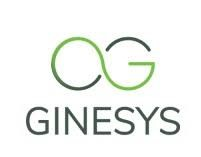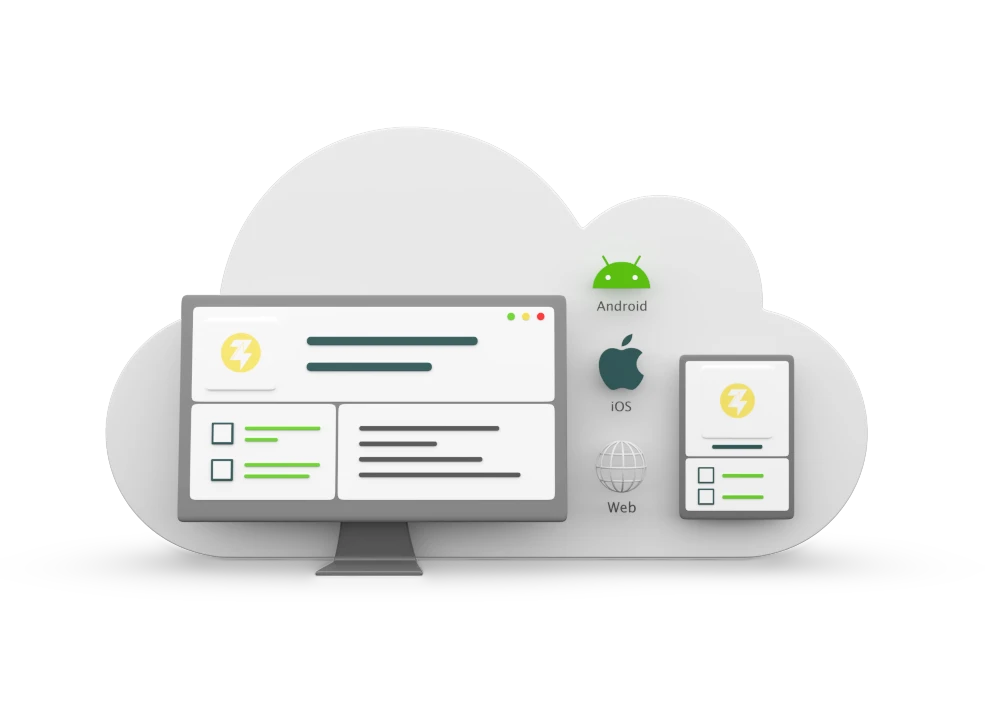Centralizing Customer Data: Why It’s a Game-Changer for Modern Businesses

Customer data today is being generated at an unprecedented scale from various channels—websites, social media, CRM systems, and more. However, the true value of this data remains unrealized in many organizations due to fragmented storage across multiple platforms. This siloed approach creates significant challenges, such as inconsistent customer information, operational inefficiencies, and missed business opportunities.
Fragmented data impacts more than just internal workflows—it directly affects customer experiences. For example, if a customer contacts support and the agent lacks access to their purchase history, it delays resolution and impacts customer satisfaction. Similarly, marketing campaigns might miss the mark because they don’t reflect real-time customer behavior, leading to lost cross-selling or upselling opportunities. In fact, 78% of companies with centralized data report improved operational efficiency, while 57% see notable business growth. Centralizing customer data addresses these pain points by providing an optimal and personalized experience that drives customer loyalty and revenue.

Unify your customer data—offer personalized experiences and drive business growth.
What Does Centralizing Customer Data Mean?
Centralizing customer data involves consolidating information from all touchpoints into a single, unified platform—a "single source of truth." This approach ensures that every department, from sales and marketing to customer service, operates from the same accurate and up-to-date information.
Traditional vs. Centralized Systems
In traditional systems, data is fragmented. Each department might use its own tools and databases, leading to inconsistencies. For instance, marketing might track email interactions, while sales rely on CRM data. These disconnected systems create gaps and inefficiencies.
A centralized system, on the other hand, integrates data from all sources. Technologies such as Customer Relationship Management (CRM) platforms, data lakes, and Customer Data Platforms (CDPs) play an important role in this integration. A CDP, for example, collects data from various touchpoints, unifies it, and makes it accessible for real-time analytics, enabling businesses to make data-driven decisions efficiently.

Simplify compliance and enhance trust with a single source of truth for customer data.
Personalization: The Power of a Unified Customer View
One of the most significant advantages of centralized customer data is the ability to offer hyper-personalized experiences. A 360-degree customer profile—combining purchase history, preferences, and engagement data—allows businesses to tailor their interactions with pinpoint accuracy.
Personalized experiences increase customer loyalty and drive revenue. Consider a retail business that offers targeted promotions based on previous purchases. Instead of sending generic discounts, they can create tailored offers that resonate with individual customers, boosting conversion rates. Loyalty programs can also be customized, rewarding behaviors that reflect each customer’s unique preferences. Such initiatives boost satisfaction and build long-term customer loyalty, turning one-time buyers into loyal advocates.
Boosting Efficiency Across Teams with Centralized Data
Centralized data eliminates silos, fostering better collaboration between departments. Sales, marketing, and customer support teams all access the same information, ensuring that everyone is aligned. With centralized data, teams no longer need to reconcile conflicting information or manually enter data into multiple systems. This reduces duplication of effort and minimizes errors.
For example, marketing can design campaigns based on real-time sales data, while support teams can resolve issues more effectively by accessing a complete customer history. This alignment accelerates decision-making and improves overall operational efficiency.

Data Integrity and Accuracy: Building Customer Trust
Accurate, consistent data is critical for building customer trust. Fragmented systems often lead to discrepancies, resulting in poor customer experiences and operational errors. Centralizing data minimizes these risks by ensuring that every touchpoint reflects the same information.
When customers interact with a business, they expect the company to know their history and preferences. Imagine a scenario where a returning customer receives inconsistent service because their data was outdated or inaccurate. This erodes trust and damages the relationship. Centralized data ensures that all departments have access to reliable information, fostering transparency and trust.
Compliance Made Simpler with Unified Data
Data privacy regulations, such as GDPR and CCPA, have raised the stakes for businesses in managing customer information responsibly. Compliance requires knowing exactly where data is stored and how it’s used—a task made far easier with centralized data.
With a single source of truth, businesses can easily track and audit data, ensuring compliance with privacy laws. Responding to customer requests regarding their data becomes straightforward, reducing legal risks and demonstrating a commitment to data privacy. Centralized systems also enable automated compliance checks, further simplifying the process.
.webp)
Transform fragmented data into real-time insights for agile, smarter decisions.
Real-Time Insights for Agile Decision-Making
Real-time insights are crucial for staying competitive in fast-paced markets. Centralized data supports real-time analytics, allowing businesses to monitor customer behavior and respond swiftly.
Consider a retail business during a flash sale. With centralized data, they can track customer purchases in real-time and adjust their strategy on the fly. This agility enables businesses to capitalize on opportunities and pivot quickly when market conditions change. Real-time insights also support proactive decision-making. For example, a business can identify trends and address potential issues before they escalate, enhancing overall performance.
How Centralization Prepares Businesses for Future Growth
Advanced technologies like artificial intelligence and machine learning rely heavily on unified data. These tools require large, consistent datasets to generate accurate insights and automate processes. Centralized data ensures that AI systems have the necessary information to operate effectively.
Centralized platforms are easier to integrate with new tools and systems, ensuring that businesses can adapt to future technological advancements without overhauling their data infrastructure. With 68% of businesses expecting accelerated revenue growth in 2024, having a flexible data infrastructure is essential for future growth.

Prepare for AI-driven innovation with a robust, centralized customer data platform.
Challenges with Centralization
While the benefits of centralizing data are clear, the process is not without challenges. Common obstacles include:
- Data Migration Complexity: Migrating large volumes of historical data can be intricate and time-consuming. Businesses often encounter issues with data consistency, format discrepancies, and potential data loss. This complexity is amplified when dealing with disparate systems that have evolved over time.
- Legacy System Integration: Many organizations rely on legacy systems that may not be compatible with modern data platforms. Integrating these older systems can pose technical challenges, requiring custom solutions or middleware to ensure a smooth transition.
- Organizational Resistance to Change: Employees accustomed to existing processes may resist adopting new systems. This cultural barrier can slow down the transition and affect overall productivity. Addressing concerns proactively is vital for smooth adoption.
Overcoming Obstacles
Data migration can be complex, especially for organizations with large volumes of historical data. Key strategies for organizations to overcome the challenges of centralization include:
- Strategic Data Migration Planning: Careful planning is key to successful data migration. Businesses should employ scalable, user-friendly tools that automate parts of the migration process, ensuring accuracy and minimizing downtime. Conducting thorough data audits beforehand can also identify potential issues early.
- Training and Education Programs: Comprehensive training helps employees understand the value of centralized data and equips them to use new systems effectively. Tailored workshops and ongoing support aid in a smoother transition by reducing resistance.
- Engaging Stakeholders: Involving stakeholders from all levels during the planning phase encourages buy-in and highlights the tangible benefits of centralization, making change management more effective.

Revolutionizing Data Management with Ginesys One
Ginesys One suite, offers a comprehensive and flexible point-of-sale solution, ERP and ecommerce OMS tailored for digital-first retail. Each of these products is capable of generating and updating customer information, but it is all being managed centrally in the Ginesys One central customer data service. This ensures that any marketing campaigns from the CRM or any customer touch point can pull live up-to-date data from this customer service. With Ginesys One the effort of building and maintaining a central customer data repository is not required as it is available out-of-the-box.
- Real-Time Data Synchronization Across Channels: Zwing Cloud POS and Ginesys Desktop POS, ensure real-time data updates to the customer information, from in-store transactions. The same functionality is available in the ERP and Ginesys OMS (Browntape).
- Data-Driven Decision Making: With Ginesys One’s centralized customer data repository, retailers can analyze purchasing trends, customer preferences, and engagement patterns in real time. This comprehensive view enables businesses to tailor marketing strategies, predict demand, and personalize the shopping experience.
- Streamlined Customer Interactions: Whether through Zwing POS, Ginesys ERP, or Browntape OMS, every customer interaction is instantly captured and synchronized. This promotes consistent communication across channels, ensuring that customers experience seamless service, regardless of where or how they shop.
- Effortless Integration for Marketing Impact: By centralizing customer data, Ginesys One empowers marketing teams to access live, reliable data for targeted campaigns. This eliminates the hassle of maintaining separate databases.

Break down silos and enhance collaboration—centralize your customer data now.
The Path to Unified Customer Data
Centralizing customer data is not merely a technical upgrade—it’s a strategic investment that transforms how businesses operate. Centralization helps in personalization, boosts efficiency, ensures compliance, and provides real-time insights. By breaking down data silos and creating a single source of truth, businesses can discover new areas of growth and build lasting customer relationships.
